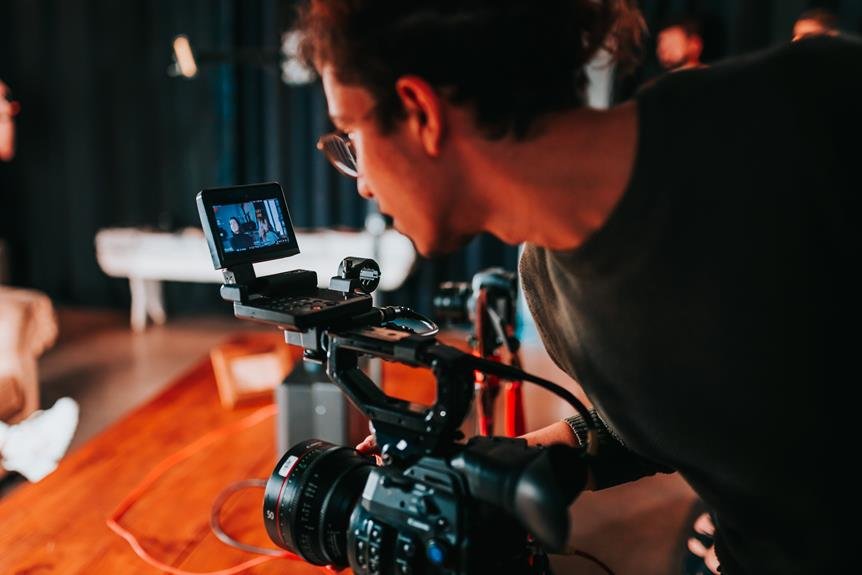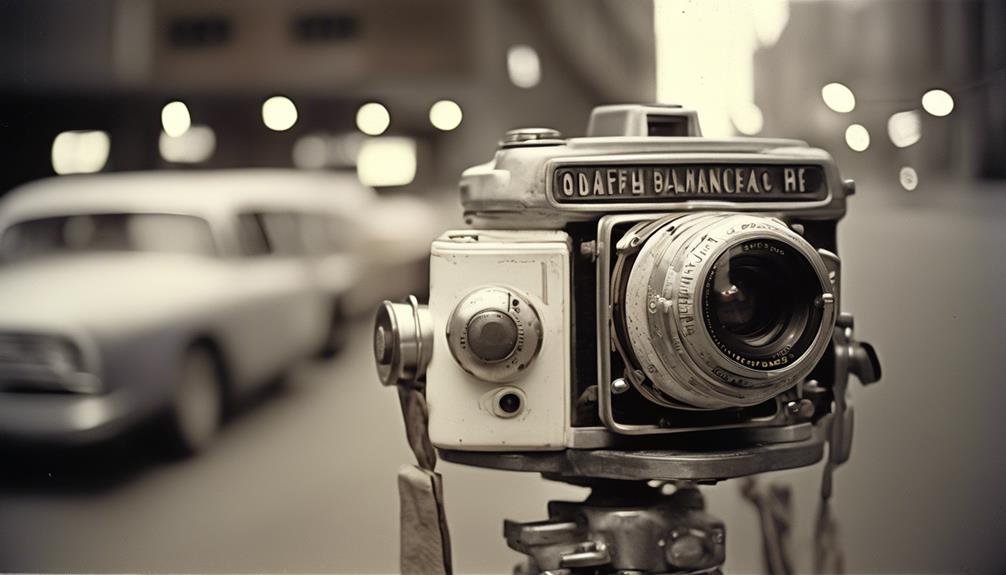
We know that figuring out the optimal video settings for your camera can feel overwhelming, especially when there are so many technical terms to grasp. But fear not, because we're here to simplify the process and help you make sense of it all. Whether you're a beginner or an experienced videographer, understanding frame rates, adjusting shutter speed, setting aperture, managing ISO, and choosing the right white balance are essential elements for capturing high-quality video. There's a lot to cover, but by the end of this, you'll have a clear understanding of how to optimize your camera settings for any video project.
Understanding Frame Rates
Let's dive into understanding frame rates and how they impact your video recordings. Frame rate refers to the number of individual frames or images that are displayed per second in a video. The standard frame rate for most videos is 24, 30, or 60 frames per second (fps). Understanding frame rates is crucial as it directly affects the quality and appearance of your video. When shooting fast-moving action, a higher frame rate such as 60fps can result in smoother and more detailed footage. On the other hand, a lower frame rate like 24fps is commonly used for cinematic purposes, providing a more traditional and filmic look to the video.
When considering frame rates, it's important to also think about the resolution options. Higher resolutions like 4K may require a higher frame rate to maintain video quality and smoothness. Additionally, selecting the right codec is essential as it determines how the video data is compressed and stored, impacting the overall quality and file size. By understanding resolution options and selecting the right codec, you can optimize your video settings for the best possible outcome.
Adjusting Shutter Speed
Adjusting shutter speed plays a crucial role in controlling the exposure and motion blur in your video recordings. By adjusting the shutter speed, we can achieve the desired balance between exposure control and motion blur, resulting in high-quality, professional-looking videos. Here are four key points to consider when adjusting shutter speed:
- Exposure Control: A faster shutter speed reduces the amount of light entering the camera, ideal for bright settings or when you want to capture crisp, detailed images. Conversely, a slower shutter speed allows more light, making it suitable for low-light conditions or when you want to convey a sense of motion.
- Motion Blur: Understanding the relationship between shutter speed and motion blur is essential. A fast shutter speed freezes motion, making it perfect for capturing fast-paced action or maintaining sharpness in moving subjects. On the other hand, a slower shutter speed introduces motion blur, which can be creatively used to convey a sense of movement and fluidity in your videos.
- Artistic Expression: Experimenting with different shutter speeds empowers you to express creativity in your videos. Whether you want to capture every detail of a fast-moving subject or create a dreamy, ethereal effect, the shutter speed is a powerful tool for artistic expression.
- Dynamic Range: Finding the optimal shutter speed for a scene helps maintain a balanced exposure and preserves the dynamic range, ensuring that both highlights and shadows are well-captured.
Understanding and mastering shutter speed opens up a world of creative possibilities, allowing you to capture visually stunning videos with precise exposure control and captivating motion effects.
Setting Aperture for Video

What role does aperture play in achieving the desired visual effects and exposure control in video recordings? Aperture control is a crucial element in videography as it directly impacts the amount of light entering the camera and the depth of field in the footage. By adjusting the aperture settings, videographers can manipulate the depth of field, allowing them to create stunning visual effects and control what is in focus within the frame.
| Aperture Setting | Depth of Field Effect |
|---|---|
| Wide (e.g., f/1.4) | Shallow depth of field, ideal for isolating subjects from the background. |
| Narrow (e.g., f/16) | Greater depth of field, suitable for capturing expansive scenes with everything in focus. |
Understanding depth of field techniques is essential for achieving the desired visual impact in video production. By strategically setting the aperture, videographers can enhance the storytelling and aesthetic appeal of their videos. This level of control over depth of field empowers creatives to craft compelling narratives and evoke specific emotions from their audience.
Managing ISO for Video
Understanding aperture settings is essential for controlling depth of field in video production, and now we will explore the role of managing ISO for achieving optimal exposure in video recordings. When it comes to managing ISO for video, there are a few key considerations to keep in mind:
- Noise Reduction: Higher ISO settings can introduce noise into your video footage, which can degrade the overall quality. It's important to find a balance between ISO and noise levels to maintain a clean and professional look.
- Low Light: In low light situations, increasing the ISO can help brighten the video, but it's crucial to be mindful of the potential for increased noise. Experiment with different ISO settings to find the optimal balance for capturing clear footage in challenging lighting conditions.
- Exposure Control: ISO plays a crucial role in controlling the exposure of your video. By adjusting the ISO settings, you can compensate for varying levels of light and achieve the desired brightness without overexposing or underexposing the footage.
- Dynamic Range: Understanding how ISO impacts the dynamic range of your camera is essential. Higher ISO settings can affect the camera's ability to capture details in highlights and shadows, so it's important to consider the dynamic range implications when setting the ISO for your video.
Managing ISO effectively is essential for achieving high-quality video recordings, especially in challenging lighting conditions. By understanding the impact of ISO on noise, low light performance, exposure, and dynamic range, you can make informed decisions to optimize the visual quality of your video content.
Choosing the Right White Balance

Choosing the right white balance is crucial for capturing accurate colors and ensuring a natural look in your video recordings. Customizing presets or using color temperature settings can significantly impact the overall quality of your footage. Custom presets allow for fine-tuning the white balance based on specific lighting conditions, ensuring that colors appear true to life. When shooting under different lighting environments, adjusting the color temperature manually can help achieve the desired warmth or coolness in your videos. It's important to remember that even subtle variations in white balance can have a noticeable effect on the mood and atmosphere of your footage. By mastering the art of white balance adjustment, videographers can enhance the visual appeal and overall professionalism of their work. Whether it's the warm tones of a sunset or the cool hues of an overcast day, understanding and utilizing white balance settings empowers creators to bring their artistic vision to life with precision and vibrancy.
Frequently Asked Questions
What Are the Best Video Settings for Shooting in Low Light Conditions?
We adjust the ISO sensitivity and use noise reduction for shooting in low light conditions. Additionally, we fine-tune the aperture for better exposure and adjust the white balance to maintain accurate colors in challenging lighting situations.
How Can I Achieve a Cinematic Look With My Camera Settings?
To achieve a cinematic look, we recommend adjusting your camera settings for a lower frame rate and incorporating color grading in post-production. These techniques can help create a more immersive and visually striking experience for your audience.
Are There Any Specific Video Settings I Should Use for Shooting Fast-Moving Subjects?
For action photography like sports events, use a high shutter speed to freeze fast-moving subjects. When filming wildlife or tracking shots, consider a higher frame rate to capture smooth motion. Adjust your ISO and aperture accordingly.
What Impact Do Video Settings Have on the File Size and Storage Requirements?
How much does resolution and framerate impact file size and storage? Higher resolution and framerate increase file size significantly. Compression techniques are crucial for managing storage needs without sacrificing quality.
Can You Recommend Ideal Video Settings for Live Streaming or Web Conferencing?
We recommend adjusting video settings for live streaming or web conferencing to optimize lighting and video resolution. These adjustments enhance the overall quality and clarity of the video, creating a more engaging and professional presentation.
